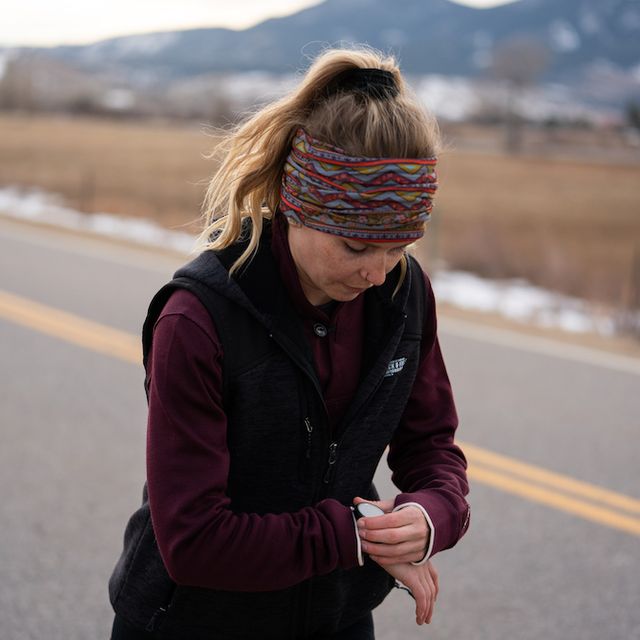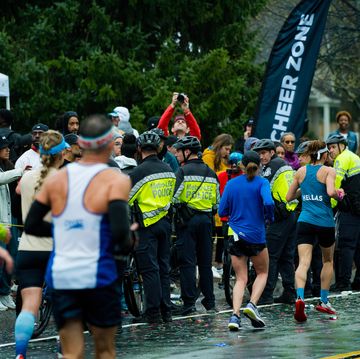- According to a recent study published in The Lancet Digital Health, fitness trackers may be able to let you know if you’re in the early stages of the flu before you realize it yourself.
- When you have the flu, your resting heart rate goes up and your sleep quality goes down—both of which your fitness tracker can identify.
Sure, your fitness tracker might give insights into your mileage, sleep quality, and calorie burn, but can it give you a heads up on whether you’re in the early stages of the flu?
Although that capability isn’t on trackers just yet, it may be in the near future, suggests a new study published in The Lancet Digital Health. And when it is, that could be a big step forward for improving public health efforts to contain infectious disease.
Researchers reviewed two months of data from 200,000 Fitbit users. (Identifying information was scrubbed, except for state, age, and gender.) Users were from California, Texas, New York, Illinois, and Pennsylvania. The average user was 43 years old, and 60 percent were female.
The average resting heart rate and sleep duration were calculated, and then deviations were identified weekly. That data was compared to estimates for influenza-like illness rates reported by the Centers for Disease Control (CDC).
Flu predictions were significantly improved by looking at rising resting heart rates and decreased sleep quality, said study author Jennifer Radin, Ph.D., an epidemiologist at the Scripps Research Translational Institute.
Everyone has a unique resting heart rate, Radin told Bicycling, and that rate begins to climb upward when there’s an infection, most likely as a response to inflammation in the body— especially when there’s a fever.
That inflammation and fever can also sabotage sleep quality, so when the two are paired up, there’s a higher risk that there may be an infection, she said. If this data is seen on a state-wide, or even a country-wide level, that has the potential to make flu predictions and reporting faster and more accurate.
Currently, traditional flu surveillance reporting takes between one to three weeks to report, according to Radin. That limits quick outbreak response measures, such as encouraging people to stay home and being more diligent about washing their hands and getting flu shots.
That capability would be even more important in a very active flu season, like the one we’re in right now. The CDC estimates that from October 1, 2019 to January 18, 2020, there have been between 15 and 21 million flu illnesses in the U.S., resulting in at least 8,200 deaths—but that toll may be as high as 20,000.
[Smash your goals with a Runner’s World Training Plan, designed for any speed and any distance.]
In terms of whether your tracker might give you enough early-flu info to cancel your evening workout or group run plans to get more sleep, or work from home for the next couple days, that will require additional studies, Radin said. But she confirms that it’s certainly possible, especially if you track your resting heart rate and sleep quality over time and recognize when the former goes up and the latter goes down.
In the meantime, that CDC recommends the usual tactics for flu prevention: Avoid close contact with people who are sick, wash your hands or use alcohol-based sanitizers if soap and water aren’t available, don’t touch your eyes, nose, or mouth, and disinfect frequently-touched surfaces at home and work.
Elizabeth Millard is a freelance writer focusing on health, wellness, fitness, and food.













